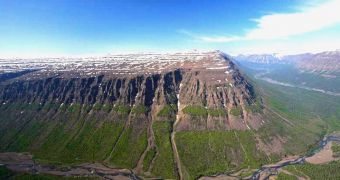The extinction event that occurred at the boundary between the Permian and Triassic (P-Tr) most likely occurred in stages, the conclusions of a new report indicates. Scientists used to believe that such events take place suddenly, but that is apparently not the case.
The P-Tr event led to the destruction of more than 90 percent of ocean-based species, as well as more than 70 percent of all land animals. It was also the only extinction ever to affect insects. At this point, researchers don't know what caused it precisely.
Over the past few years, scientists have argued that such events need not necessarily be violent events. Some have proposed that it took thousands to millions of years for such an instance to complete, and the new study appears to confirm their suspicions.
In the new investigation, led by University of Cincinnati geologist Thomas Algeo, researchers in the United States conducted a series of digs in a layer of the geological record known to represent the P-Tr boundary. The research was conducted in the Canadian Arctic, on Ellesmere Island.
Details of the new research effort were published in the latest issue of the esteemed journal Geological Society of America Bulletin. The study suggests that the P-Tr event took hundreds of thousands of years to complete. This extinction occurred roughly 252.2 million years ago.
Some of the most likely causes for the P-Tr event include pervasive oceanic dead zones, massive amounts of acid rains, a runaway greenhouse effect, the release of massive amounts of ash particles from Siberian volcanoes, and so on.
“The scientists relate this extinction to Siberian Traps volcanic eruptions, which likely first affected boreal life through toxic gas and ashes,” US National Science Foundation (NSF) Division of Earth Sciences (DES) program director H. Richard Lane explains.
“The eruption released lots of methane when it burned through the coal. Methane is 30 times more effective as a greenhouse gas than carbon dioxide. We're not sure how long the greenhouse effect lasted, but it seems to have been tens or hundreds of thousands of years,” adds Algeo.
The new investigation was funded by the NASA Exobiology Program and the Canadian Natural Sciences and Engineering Research Council.

 14 DAY TRIAL //
14 DAY TRIAL //